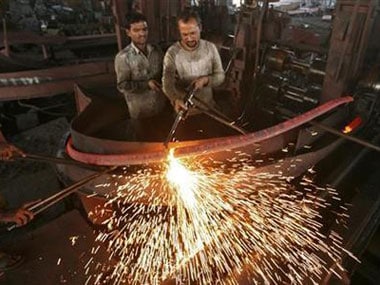The Central Statistical Organisation (CSO) gross domestic product (GDP) numbers have tended to be fairly whimsical with revisions being common in the past which make drawing conclusions a bit difficult especially when there are still three months data missing. Therefore, when one looks at the growth projected in the second advance estimate for the year which is 6.6 percent, it is at variance at the sector level with higher growth being projected for sectors like manufacturing, public administration, construction and agriculture relative to the first estimate. This really raises the question as to whether the CSO should be bringing out the first advance estimate in January which is anyway based on extrapolation of information available for the first 2 quarters for the entire year. This may be unnecessary.
The overall growth for the year looks reasonable at 6.6 percent, though the gross value added (GVA) growth is to be 6.4 percent, which is a difference of 0.2 percent caused by the net indirect taxes. This is at variance with the 0.5 percent difference for the October-December quarter growth numbers which again raises some doubts. The introduction of Goods and Services Tax (GST) and the changes in accounting has caused significant disturbance in the numbers which are hard to explain. It may be assumed that in the next few quarters they would even out.
Growth for the year is to be led by the government all the way. The public administration component is to grow by 10.1 percent and construction by 4.3 percent which are primarily government determined. The question here is for how long will this carry on where private sector trails public spending. The government has achieved this much with certain compromise made on the fiscal deficit which is pragmatic though for growth to look more assuring, it has to be supported by the private sector which is not forthcoming. In fact the latest information on fiscal deficit being 113 percent the revised target can cause a rollback in January-March quarter if tax collections do not increase.

Representational image. Reuters.
Two interesting observations can be made here. The first is that private consumption is growing at a lower rate of 9.5 percent than nominal GDP which is at 9.8 percent. Here the message is that households are not spending. Rural households have faced a paradoxical situation where output has increased which has contributed to GDP growth but income has not due to lower prices, which has raised the controversy on higher minimum support prices (MSPs) being proposed for the next year. The second is that jobs are not being creating in adequate numbers.
The second is that the CSO has abruptly changed the gross fixed capital formation numbers (at current prices) for FY16, FY17 and FY18 from 29.3 percent, 27.1 percent and 26.4 percent to 28.5 percent for all the three years. This looks unlikely as no proxy variable for investment such as term lending, debt market, investment proposals, new projects, etc. support such a high number. Clearly these numbers would be liable to change in the next set of estimates in May 2018.
Another curious question that can be raised here is that the component of valuables has increased sharply by 54 percent from Rs 1.76 in FY2017 to Rs 2.71 lakh crore in FY2018. As this consists essentially of gold and silver the indication is that households have gone back to their traditional ways of savings given that interest rates have come down and while there has been some migration to stocks and mutual funds, valuables are still preferred even after demonetisation. Therefore, the share of valuables in GDP is up from 1.2 percent to 1.6 percent.
The October-December quarter GDP numbers of 7.2 percent however are more in line with expectations based on data available on individuals sectors. A good kharif harvest supports the 4.1 percent growth in this period. Manufacturing too has gained a lot from the restocking exercise undertaken in December quarter which has pushed growth to 8.1 percent. High growth in construction was also expected given the good performance posted by cement in particular along with steel which can again be linked with higher government involvement which also resulted in higher fiscal deficit witnessed during this period which caused the government to announce a higher borrowing programme for the year. The upsurge in the category of trade, transport, hotels etc, can be largely attributed to the GST collections which have been buoyant as this is a proxy used for the sector contribution to GDP.
How then can one interpret these numbers? First, based on these estimates GDP has to grow by 7.1 percent in March quarter, which looks possible unless something goes terribly wrong which does not look likely. Second, does this mean that we are on a high growth path? The answer is no as growth at 6.6 percent will still be well below than 7.1 percent achieved last year and 8.2 percent in FY16.
Third, there has to be revival of private sector demand both in the form of consumption and investment for growth to really be self-sustaining. Support from the government cannot be the sole driver. Even today it is the central government which is ploughing away as states have limited fiscal space here. Fourth, revival in private demand will only be gradual and cannot come in an accelerated manner. Fifth, hence for FY19 growth would move gradually towards 7.5 percent and we may have to wait longer for the 8 percent mark. It should also be mentioned that what is more important than the GDP growth number is the corresponding picture on the employment front and these numbers have to move up or else the demand chain cannot be sustained.
(The writer is a chief economist at CARE Ratings and he tweets @madan_sabnavis)
Published Date: Feb 28, 2018 20:02 PM | Updated Date: Feb 28, 2018 20:14 PM

